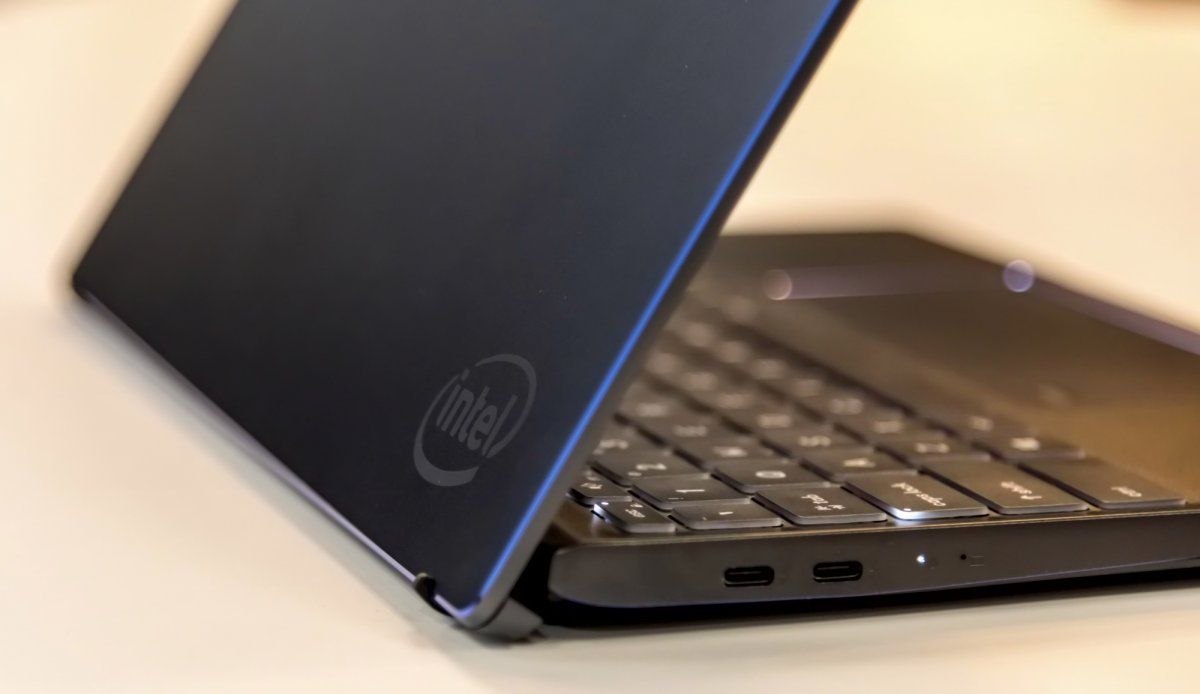Notebook processors: Intel publishes lopsided AMD comparison
Source: Heise.de added 24th Nov 2020Intel’s Chief Performance Strategist Ryan Shrout recently gave a presentation to the US press in which he described the performance of Tiger Lake’s own Intel Core i mobile processors – 1100 G with AMD’s Renoir models Ryzen 4000 U compared. Specifically, it was about the computing power of the processors in battery mode and with the power supply connected – or rather the difference between them.
Based on a few benchmarks, including PCMark 10 and a PDF converter, Intel concludes that notebooks with Ryzen – 4000 U – Processors calculate significantly more slowly when traveling without a power supply. The discrepancy from 38 – 48 Percentage between plug and battery operation would make the differentiation between Ryzen 3 ( four CPU cores), Ryzen 5 (six CPU cores) and Ryzen 7 (eight CPU cores). The benchmark results are correct in the right context, but Intel’s presentation distorts reality enormously.
Intel’s notebook performance comparison with power supply vs. Battery operation (6 pictures) Intel’s Core i7 – 1165 G7 keeps its performance in battery mode, but takes 50 Watts and more.
(Image: Intel, via ExtremeTech) Delayed boost Intel shows the reason for the performance difference itself on: The Ryzen – 4000 U processors in the notebooks tested require up to 10 seconds to fully utilize their boost rate. What Intel hides, however: This is a behavior deliberately provided by the notebook manufacturer in order to save battery power by preventing the CPUs from speeding up immediately with every brief load. AMD gives manufacturers guidelines for this, but leaves them free to configure. Intel has tested five notebooks, four of them came from Lenovo, one from HP.
Due to the delay Boost behavior, the results of benchmarks that run continuously for longer than a few seconds turn out significantly better in battery mode. Intel itself shows the results of the Cinebench R render benchmark 20, but only dismisses this with a “strange” (“oddly”).
Ryzen with high efficiency Indirectly, Intel also admits with its own presentation that Tiger Lake needs a lot of energy to get through very high clock frequencies to keep up with AMD’s competition. Because Tiger Lake only has four CPU cores, while AMD’s Renoir has up to eight. The top AMD model Ryzen 7 Tiger Lake CPU Core i7 – 1165 G7 and uses less energy at the same time.
AMD specified for the Ryzen 4000 U a Thermal Design Power (TDP) of 15 Watt. However, depending on the design of the power supply and cooling system of the respective notebook, the notebook manufacturers adapt the CPU to their hardware using a configurable TDP (cTDP). Renoir processors can be set to 20 Set watt cTDP – in short-term boosts the power consumption increases to good 30 watts. Intel recommends notebook manufacturers, however, Tiger Lake with 28 Watt TDP to be installed. The short-term PL2 (power limit 2) is more than 50 Watt, usually for 20 to 30 seconds.
The website ExtremeTech suggests in this context that Intel could market the improvements in clock performance in battery mode as an advantage over its in-house predecessor Ice Lake. A tested Surface Laptop 3 with Core i7 – 1065 G7 from Microsoft showed the same behavior that Intel AMD criticizes: In battery operation, the performance sometimes drops rapidly and that also over longer periods of time, for example in the Cinebench R render benchmarks 23 and handbrake, with the latter to halved performance.
Extreme dynamics In the typical everyday use of notebooks The highest possible short-term computing power is desirable because it speeds up booting, starting applications and loading complex websites, for example. The CPU cores then fall back into a more economical operating mode in order to save battery power. How the processor reacts specifically to changing computing loads depends heavily on the design of the individual notebook. With many notebooks, the clock behavior of the processor can also be adapted to your own requirements via the power management.
(mma)
brands: AMD HP Intel Lenovo Microsoft media: Heise.de keywords: Core i7 laptop Mobile notebook Ryzen Tiger Lake
Related posts
Notice: Undefined variable: all_related in /var/www/vhosts/rondea.com/httpdocs/wp-content/themes/rondea-2-0/single-article.php on line 88
Notice: Undefined variable: all_related in /var/www/vhosts/rondea.com/httpdocs/wp-content/themes/rondea-2-0/single-article.php on line 88
Related Products
Notice: Undefined variable: all_related in /var/www/vhosts/rondea.com/httpdocs/wp-content/themes/rondea-2-0/single-article.php on line 91
Warning: Invalid argument supplied for foreach() in /var/www/vhosts/rondea.com/httpdocs/wp-content/themes/rondea-2-0/single-article.php on line 91
